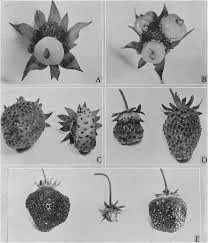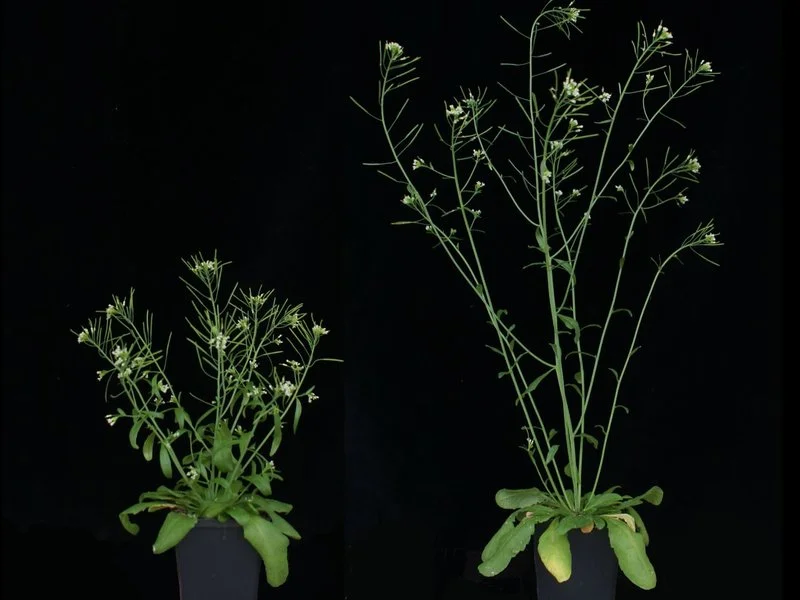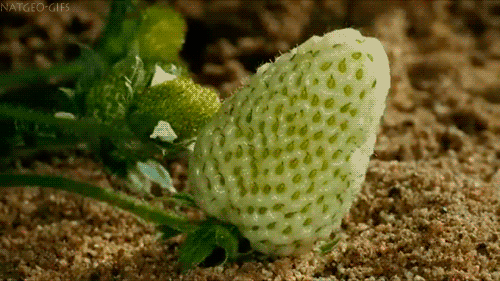Welcome back to Everything You Wanted to Know About Plants. Last time I talked to you about how palms are sneaky devils that trick you with their woody wiles into believing that they are trees like any self-respecting pine, oak or maple. By now you’re probably wondering what the obsession is with plants or maybe you’re wondering how plants manage to organize themselves into their complex anatomies. For the former group, this is a blog run by Our City Forest, an environmental non-profit that takes plants very seriously (and would appreciate a donation, thanks). The people in the second group are in for a treat because today’s topic deals exclusively with the way that plants organize themselves using hormones.
Look at all that beautiful, complex organization, courtesy hormones and the artistic hand of Walther Müller and Carl Friedrich Schmidt (*1812), (Published in Köhler's Medizinal-Pflanzen - Public Domain)
Hormones are not just an excuse for irrational, teenage behavior. Hormones are crucial chemical signals generated by cells to communicate with each other inside of a multicellular organism. In animals, hormones are made by specialized glands, like the pituitary, or adrenal glands. They do things like trigger puberty, increase or decrease your heart rate, regulate appetite, growth, sleep and many other things. Plants don’t have glands and instead make hormones throughout the entire plant, usually in meristematic tissue, like the cambium, buds or root tips. Plants don’t have blood streams (note: if your plant is bleeding you should seek immediate assistance) so they rely on diffusing their hormones with the same systems they use to distribute water and sugar, xylem and phloem. But what are these hormones and what do they do? Turns out there are a lot of them and they do everything. We’ll keep it simple for you though and stick to the most important of the hormones.
Aw yeaaah. Let's get phytohormonal. (source)
Auxin:
Remember back when I told you to use your Christmas tree as an anatomical model of trees? I talked about “apical dominance”, the tendency of the highest bud on the tree to suppress and control the growth of lower buds. Auxin is the hormone that the apical bud uses to establish dominance. Auxin tells buds “Hey bud, don’t grow just yet. No cell division for you”. Auxin, however, like a terrible gossip, doesn’t tell every cell the same thing. Auxin tells cells in the stem to elongate which propels the apical meristem upward and the buds at the tips of branches outward. It also tells cells to pump it downward, against gravity and away from sunlight, distributing it throughout the plant. When auxin reaches the roots it says the opposite of what it says to the buds. “Yo roots, the time for cell division is neigh!” It does other things too. Auxin also promotes fruit growth, leaf retention and plant growth toward sunlight (or toward gravity in roots). To top it off auxin was discovered by Darwin while he was studying plants to determine how they orient toward light.
If you take the auxin-producing seeds off of strawberries they grow weird, or not at all. (source)
Cytokinin:
So if auxin travels down the plant from the meristematic buds, preventing growth how does a branch ever grow into a branch? As it turns out plants have developed a yin to auxin’s yang in the form of cytokinin. Made in the root tips and pumped upward toward the stems, cytokinin prevents lateral root growth and promotes branching in shoots. This means that the ratio of cytokinin to auxin controls what kind of tissue the plant produces. More auxin means more roots. More cytokinin means more shoots and branches. Cytokinin also keeps above-ground growth fresh by preventing protein breakdown and encouraging protein synthesis. You can spray it on cut flowers and leaves to keep them from wilting.
This is what it looks like when cytokinin runs rampant without an auxin to say "slow down". (Source: By William M. Gray - Gray WM (2004) Hormonal Regulation of Plant Growth and Development. PLoS Biol 2(9))
Gibberellin:
Gibberellin, other than being a fun word to say, is another important plant hormone. It is made when plants are exposed to cold temperatures but it isn’t released until a plant is exposed to water. Those sound like very specific times to make and activate a hormone but it makes sense when you think about what a plant is doing at those times. As it gets colder, plants divert resources to making fruits and seeds that can last the winter. Gibberellins work in concert with auxin to promote fruit growth. They’re so good at making fruits grow that they’re applied to the “seedless” varieties of fruits you find in the grocery store to make them bigger and sweeter. In normal conditions gibberellins are also stored in the “endosperm” of the seed where it is dry. When the seed is exposed to water it activates the stored gibberellins which tell the dormant seed to wake up. It also triggers the breakdown of starch in the seed into glucose which the baby plant will use to fuel itself until it can start photosynthesizing. Gibberellins also degrade growth-inhibiting proteins, basically making them the most pro-growth of all the hormones. If it can grow, gibberellin wants it to grow.
Without gibberellins you get dwarf, stunted plants. (source)
ABA:
ABA, not to be confused with ABBA, is the counter to gibberellin. As it gets colder and darker ABA is made and directs leaf buds to cover themselves in protective scales. It travels into the stem where it slows stem growth and prevents cell division in the cambium. ABA is also stored in seeds to prevent gibberellin from ending dormancy too soon. As time goes by ABA eventually breaks down and allows gibberellin to wake the seeds up. ABA is also important in drought. When roots detect dry soil they release ABA to slow growth and prevent water from escaping from the stomata pores in the leaves.
These wax ABBA statues are neither ABBA nor ABA. (source)
Ethylene:
Sticking to the fruit-and-seeds motif we’ve got going on here brings us to ethylene. If you’ve ever wrapped produce in a green baggie at the supermarket you’ve been capturing ethylene. The hormone is a gas that triggers, among other things, fruit ripening, leaf dormancy and flower opening (and eventual decay). Ethylene release can trigger a positive feedback loop where ethylene triggers the release of more ethylene. This means that a bag with one ripe fruit and a bunch of unripe fruit will ripen as ethylene is released from the ripe fruit. In autumn, as deciduous trees release more ethylene the entire canopy becomes full of the “drop your leaves” signal. This happens at the same time that cold temperatures trigger a decrease in auxin and an increase in ABA. The leaves get the signal to abscise and drop at the same time as they stop receiving the “hold onto your leaves” signal. It’s not all bad though. Ethylene is also released when a plant is injured by an insect or other herbivorous attack. In that case ethylene signals to the plant to cut its losses and drop the leaf because it’s being eaten or infected by something. If you were a plant this would be the equivalent of dropping your arm off when you got bitten or cut, only to regrow it when you were safe. Lack of ethylene detection signals the plant that it's drowning and will trigger shoot and leaf elongation to prevent suffocation.
Ethylene induces ripening from the oldest fruits, gradually diffusing outward (source)
There are many more plant hormones (that I will not be describing at length). The smell of fresh-cut grass, is a cocktail of plant hormones that signal distress to the other parts of the grass and neighboring plants to harden themselves against attack by a plant eater or parasite. Incidentally it’s also a clarion call to predatory insects to eat whatever it is that is harming the grass. There are plant hormones that signal pollination, stress, growth and infection. There are plant hormones that talk exclusively to symbiotic root fungi and there’s evidence that plants and fungi engage in some serious, non-hormonal communication though the exchange of genetic material. Plants can even sense fire through the detection of plant-based molecules in smoke. Plants, as it turns out, are very much aware of themselves and their environments in a radically different way than animals are.
Ethylene, Auxin and Gibberellins working together to ripen a strawberry. (source)









